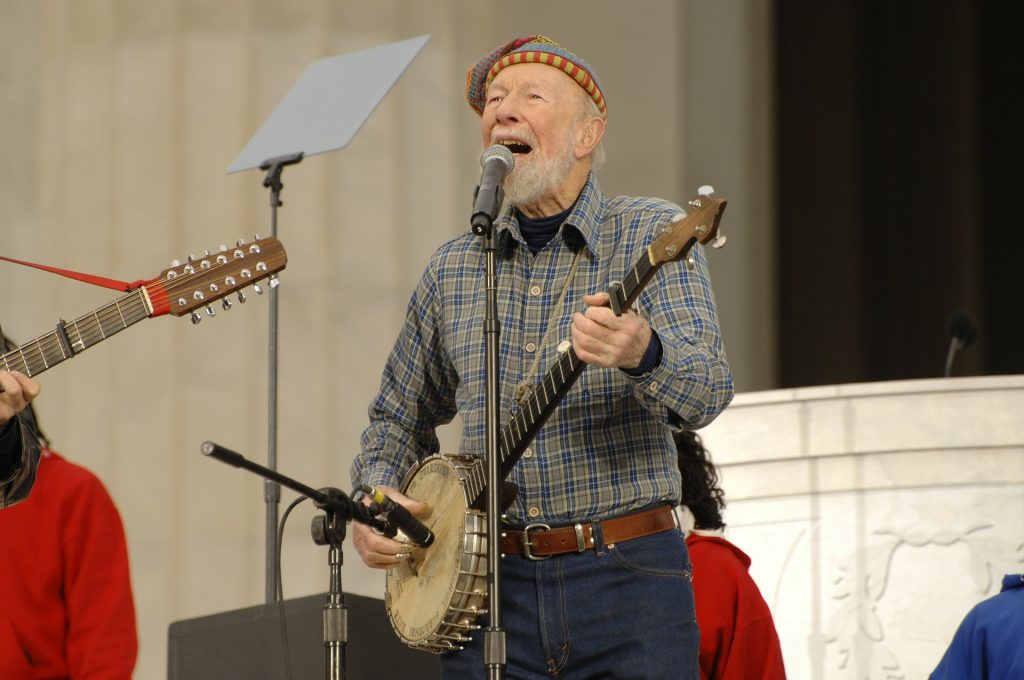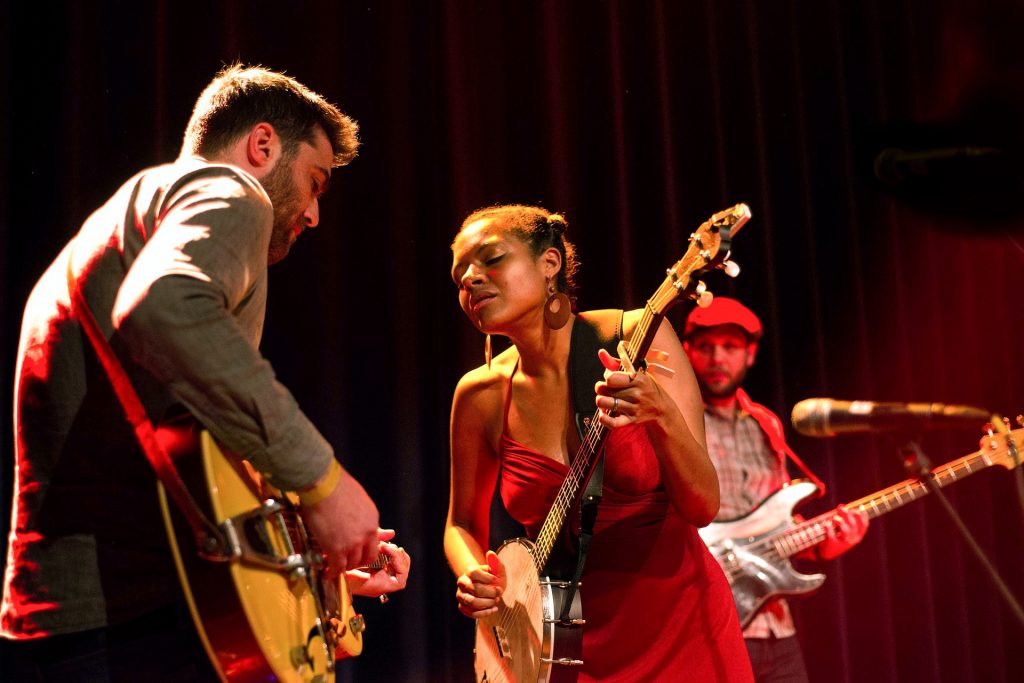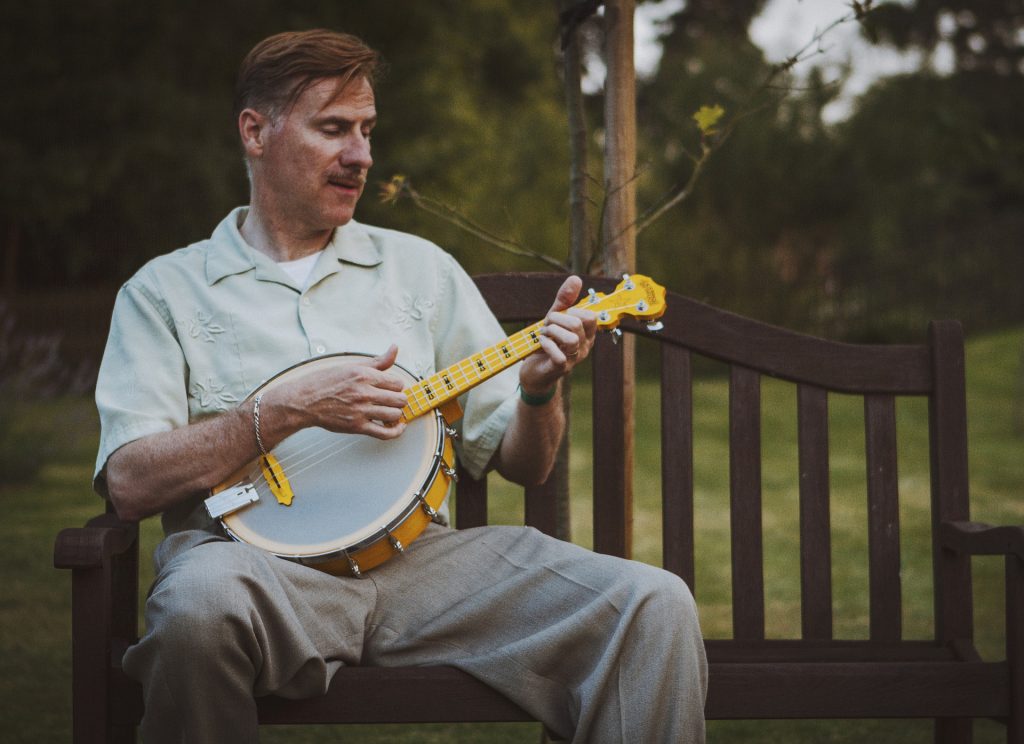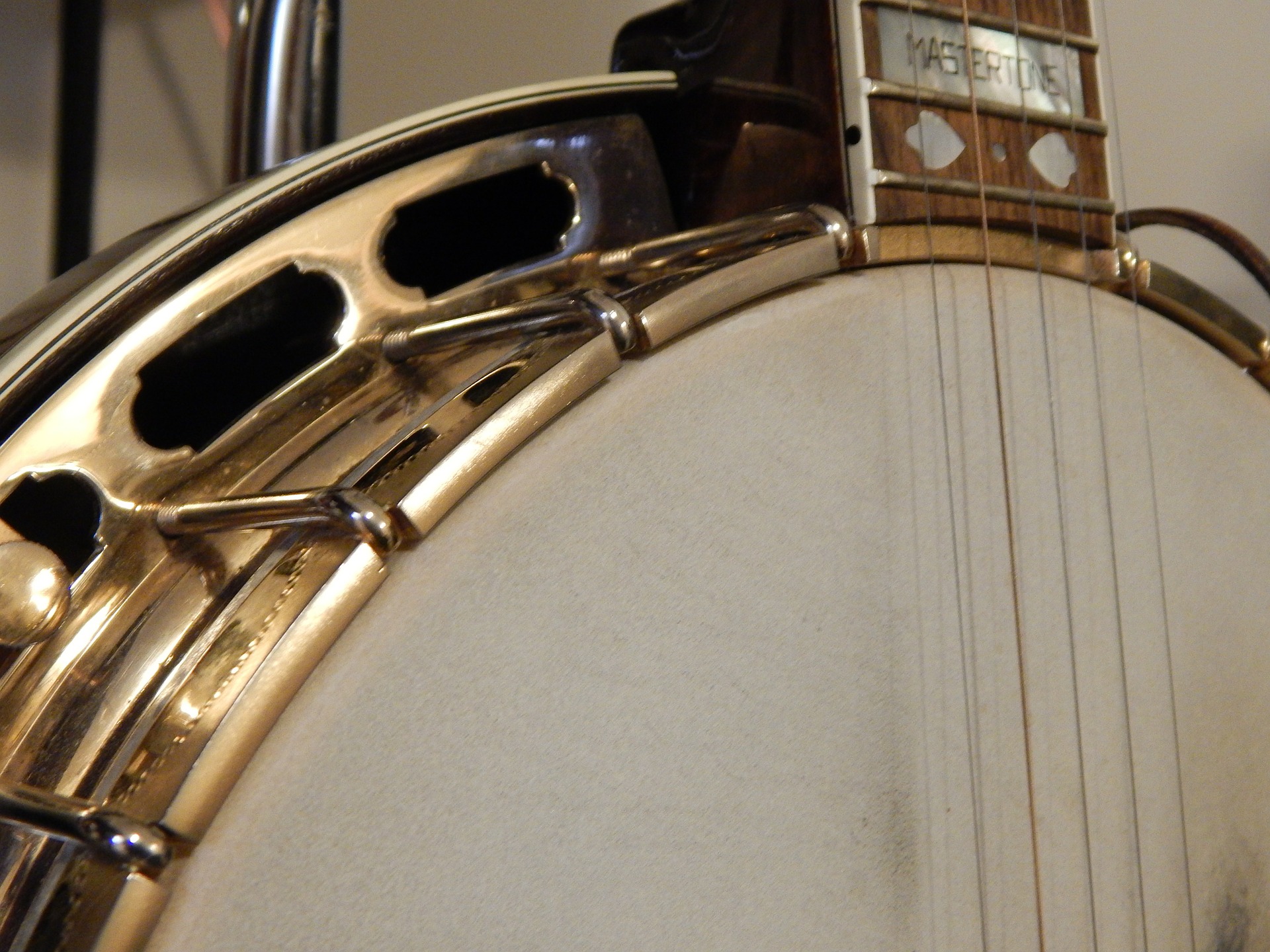Disclosure: Some of the links in this post are affiliate links. That means that if you click on a link and purchase an item, we may receive an affiliate commission at no additional cost to you. As an Amazon Associate I earn from qualifying purchases.
Wondering what the difference is between the 5-string vs 4-string banjo? Not sure if you should buy a 5-string banjo or a 6-string banjo?
If you’re interested in learning to play the banjo, you may have discovered that there are a lot of different types of banjos out there. The 4-string, 5-string, and 6-string banjos are all used fairly often by musicians and bands, and if you don’t know what the difference is, you may have a hard time deciding which type you should buy.
In this article, we’ll give you a complete overview of the confusing distinctions between the 4-string, 5-string, and 6-string banjos.
The Basics of the Different Types of Banjos

Let’s start with the basics. Each of the different types of banjos sounds pretty similar, but they have different amounts of strings on them. Because of this, they will be played differently and their respective standard tunings will also be just a bit different.
So how many strings does a banjo have and what are the different types? Let’s go from the least amount of strings to the most amount of strings.
4-String Banjo
The 4-string banjo can be tuned in several different ways and none of them are really considered the standard. CGDA, GDAE, and DGBE are all common options and each allows players to achieve a different sound and require them to play a bit differently.
Under the umbrella of 4-string banjos, there are both “tenor” banjos and “plectrum” banjos. The plectrum banjo is played with a pick like a guitar and uses the DGBE tuning, which is similar to the bottom 4 strings of a guitar.
5-String Banjo
For the 5-string banjo, the most common tuning is GDGBD. With this tuning, which is considered an open tuning, the banjo produces a full G chord. Interestingly, the top string here is actually tuned higher in pitch than any of the other strings. This gives the 5-string banjo a very unique “chiming” sound.
The 5-string banjo is typically played with fingerpicks in the “Scruggs Style”, a banjo style made popular by bluegrass banjoist Earl Scruggs.
Players also sometimes play the 5-string banjo in the “clawhammer” style. This style of banjo playing is the second most popular banjo style after the Scruggs Style banjo. Be sure to check out our list of clawhammer instruction books if you’re interested in this style.
6-String Banjo
The 6-string banjo, some may argue, shouldn’t even be considered a banjo at all. The 6-string banjo, also known as a banjitar or guitjo, is actually tuned like a guitar. However, you’ll play it exactly the same way that you’ll play the guitar.
Guitarists who want to get a different sound often switch to the 6-string banjo while transferring over their existing skills. With a banjitar, players can achieve the same unique, resonant tone of a 4-string or 5-string banjo while also utilizing a guitar playing style.
Why Are There So Many Types of Banjos?

It may seem that there are a lot of different types of banjos out there. Some players own and play multiple types of banjos, but others stick to just one.
While 6 strings are pretty much the standard for a guitar, there’s more debate when it comes to the banjo. The truth is that the banjo used by a player very much depends on what genre or style they’re interested in playing in.
While the guitar, by comparison, has a role in many different genres of music, the type of banjo used is a bit more specifically suited to one genre or another. While this isn’t a hard and fast rule, it does tend to be the norm more often than not.
Here are the most common genres you can expect to be played based on the banjo used:
- 4 String/Plectrum Banjo: Dixieland Jazz, Classical, Irish Folk, Old-Time
- 5-String Banjo: Bluegrass, Classical, Jazz
- 6-String Banjo: Folk, Rock
Other Types of Banjo Instruments

While the banjos we’ve mentioned above are the most common instruments that are considered banjos, there are others as well.
Like the 6-string banjo, there are a lot of hybrid banjo instruments that are a mash-up of another instrument and the banjo. These instruments can be played differently than the banjo. However, they still offer players that unique twang that you can only get from a banjo instrument.
The banjo ukulele is one of the most popular types of banjo instruments that are out there, which isn’t quite considered a banjo. The banjo mandolin is also a great instrument that is played like a mandolin but sounds just like a banjo.
Deciding Between the 5-String vs 4-String vs 6-String Banjos
If you’re trying to decide what type of banjo to buy, the bottom line is that you’ll probably want to consider what genre you want to play first and foremost. The 5-string banjo is a great choice if you aim to be the best bluegrass player around. However, the other banjos could be good options if you’re interested in other genres or you’re hoping to transfer your guitar skills over to a new instrument.
Unfortunately, there is no clear winner when trying to decide between the 5-string vs 4-string vs 6-string banjo. Each type of banjo is unique and each has its strong points. In the end, you’ll have to figure out which one is right for you and make the decision for yourself.
If you’re looking for a 5-string banjo, however, we can help. We’ve already compiled a great list of beginner 5-string banjos, so be sure to check it out once you’re done here.

Hi, I’m Harrison! I created this website to help musicians navigate the ins and outs of their craft and to help them choose new instruments and gear to add to their collection. I have 15 years of experience as a guitarist and singer and have also played many other instruments throughout the years including the bass guitar, piano, banjo, mandolin, and harmonica.

